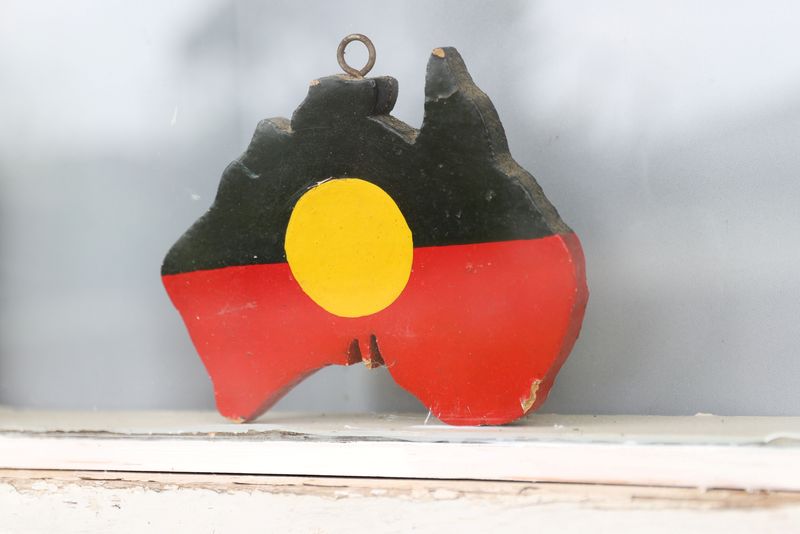Australia debates Indigenous referendum as pamphlets launched
2023.07.18 01:08

© Reuters. FILE PHOTO: A depiction of the Australian Aboriginal Flag is seen on a window sill at the home of indigenous Muruwari elder Rita Wright, a member of the “Stolen Generations”, in Sydney, Australia, January 19, 2021. REUTERS/Loren Elliott
SYDNEY (Reuters) – Parties on both sides of a debate on whether to constitutionally recognise Australia’s Indigenous people released their official pamphlets on Tuesday, which will start being delivered to letterboxes across the country.
Australians will be asked to vote in a referendum later this year on whether they support altering the constitution to include a “Voice to Parliament”, an Indigenous committee that can advise the parliament on matters affecting Australia’s Aboriginal and Torres Strait Island people.
There is currently no mention of the First Nations people in Australia’s constitution.
Pamphlets from those supporting the constitutional change, known as the ‘Yes’ camp, and those against it, called the ‘No’ camp, was published on the election commission website on Tuesday.
“If you don’t know, vote no,” the No camp said in its pamphlet, which listed 10 arguments for voting against the constitutional change, including that the change would be “legally risky with unknown consequences” and that it would be “divisive and permanent”.
Supporters argued voting yes in the referendum would “unite the nation” as it recognises a 65,000 year-old Indigenous culture and would bring practical progress for Indigenous health, education, employment and housing.
“Governments from both sides have invested billions in programs that haven’t fixed problems or reached communities. A Voice will help us listen to locals and save money,” the Yes campaign letter said.
Aboriginal people, making up about 3.2% of Australia’s near 26 million population, track below national averages on most socio-economic measures.
While a majority of Indigenous Australians still back the change, recent polls have shown that support has been wavering at a national level.
Getting constitutional change is difficult in Australia, as the government must secure a double majority, which means more than 50% voters nationwide, and a majority of voters in at least four of the six states must back the change.
In the past there have been 44 proposals for constitutional change in 19 referendums, and only eight of these have passed.
Prime Minister Anthony Albanese said this week that the government has not yet settled on a specific date for the referendum but it will be held between October and December this year.








